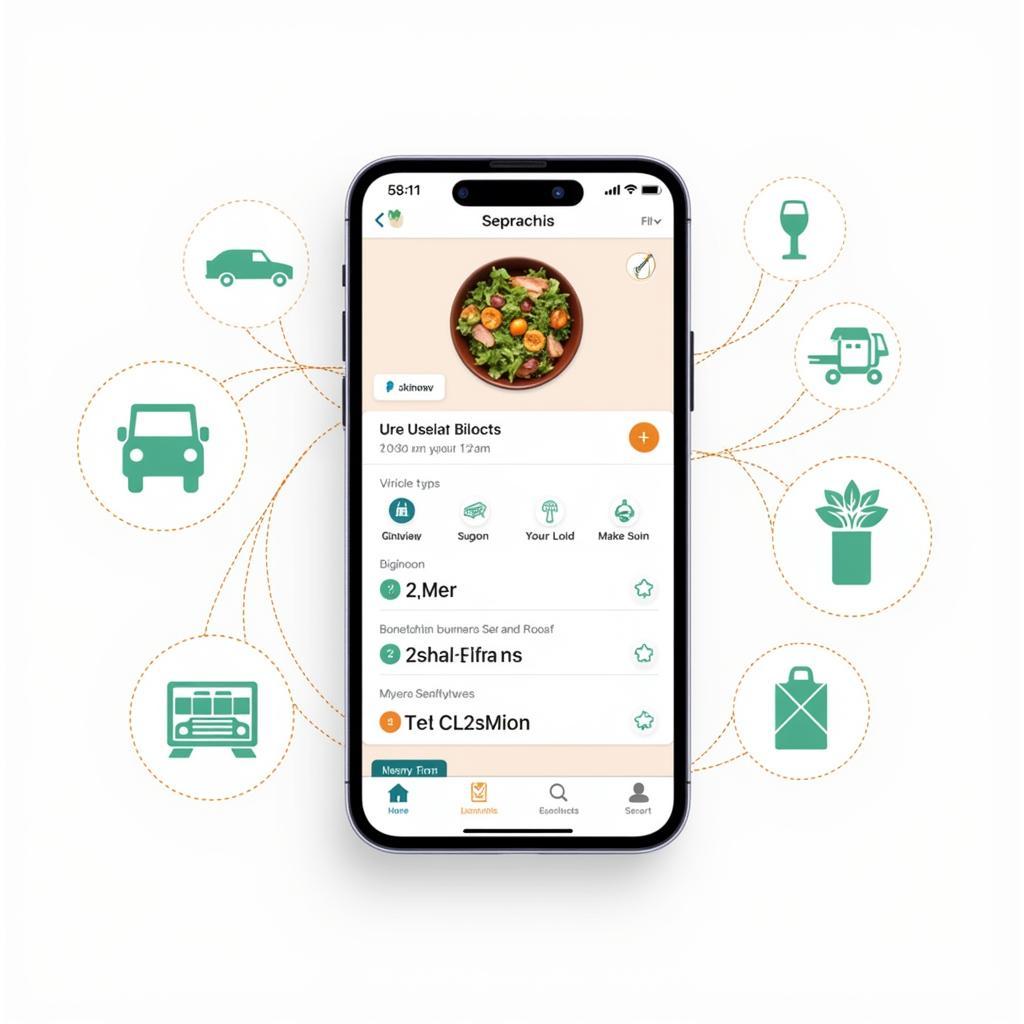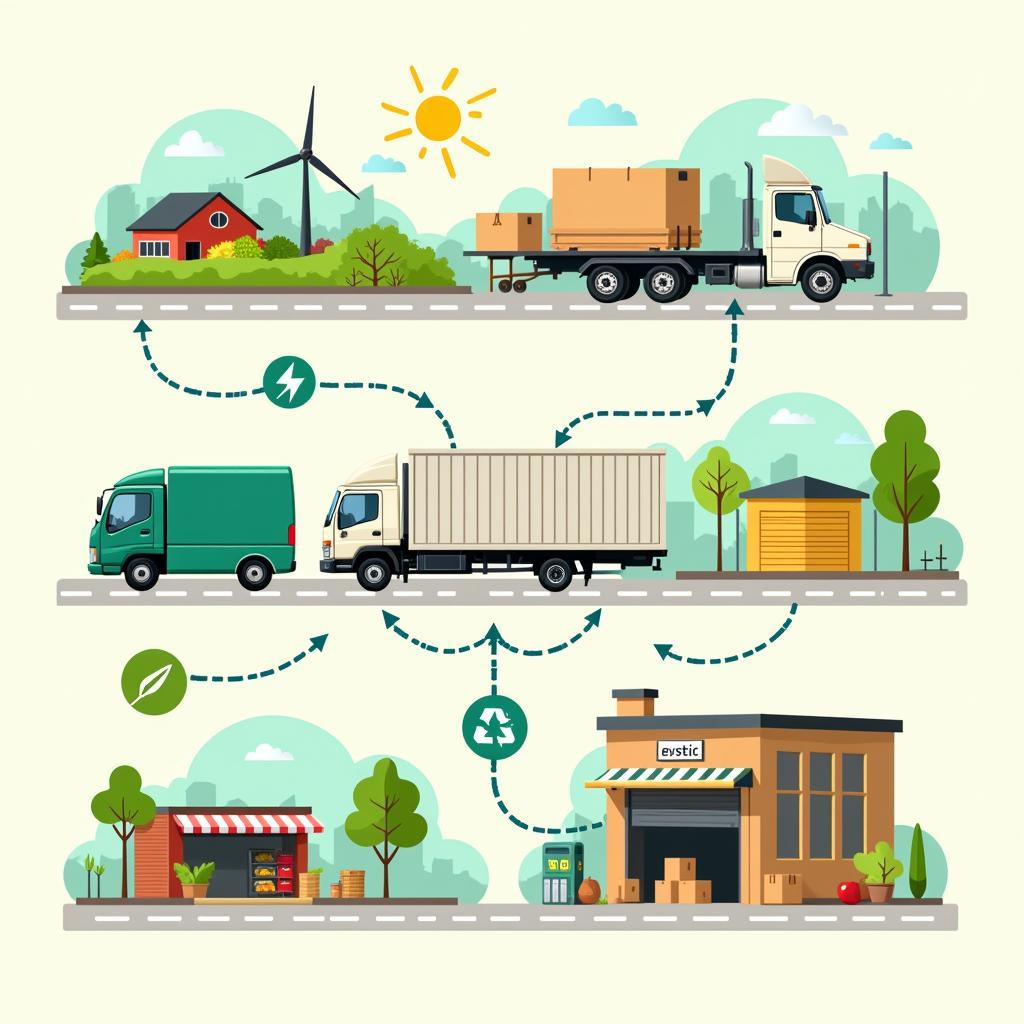Supply chain management on the food market in 2024 is facing a dynamic landscape. From shifting consumer demands and technological advancements to geopolitical instability and climate change, the food industry must adapt to maintain a resilient and efficient supply chain. Understanding these challenges and opportunities is crucial for success in the coming year.
Navigating the Complexities of Food Supply Chain Management in 2024
The food industry is under constant pressure to deliver fresh, safe, and affordable products to consumers. This requires a robust supply chain capable of handling everything from farm to fork. In 2024, several key trends will shape how food companies manage their supply chains. Let’s explore the challenges and opportunities that await. Looking at companies such as those listed in the top food distribution companies in USA can provide valuable insights into current best practices. You can also analyze the food distribution industry analysis for a broader understanding.
One significant trend is the increasing demand for transparency. Consumers are more conscious than ever about where their food comes from and how it is produced. This requires companies to implement traceability systems that can track products throughout the entire supply chain. Blockchain technology is emerging as a promising solution for enhancing transparency and building consumer trust. Moreover, with acquisitions like Kehe buys Lipari Foods, we can see a trend towards consolidation in the industry.
 Food Supply Chain Transparency in 2024
Food Supply Chain Transparency in 2024
Another major challenge is the ongoing impact of climate change. Extreme weather events, such as droughts and floods, can disrupt agricultural production and transportation networks. Food companies need to develop strategies for mitigating these risks, such as diversifying their sourcing and investing in climate-resilient infrastructure. The dry food distributors are especially susceptible to these challenges.
Technology’s Role in Transforming Food Supply Chain Management
Technology is playing an increasingly important role in optimizing food supply chains. Artificial intelligence (AI) and machine learning (ML) are being used to improve demand forecasting, optimize inventory management, and automate warehouse operations. These technologies can help reduce waste, improve efficiency, and enhance responsiveness to changing market conditions.
Furthermore, the rise of e-commerce is transforming the way food is distributed. Companies need to adapt their supply chains to meet the demands of online ordering and home delivery. This requires investments in new infrastructure, such as fulfillment centers and last-mile delivery networks. For a closer look at a specific market, the Israel frozen food market outlook provides a relevant case study.
What are the Key Challenges in Food Supply Chain Management for 2024?
Voice search optimization is crucial. Consumers are increasingly using voice assistants to search for information about food products and services. Companies need to optimize their online content for voice search by using natural language and long-tail keywords.
How Can Companies Improve Food Supply Chain Visibility?
Implementing track-and-trace systems and leveraging data analytics can significantly enhance supply chain visibility.
What is the Impact of Geopolitical Instability on Food Supply Chains?
Geopolitical events can disrupt trade routes and create uncertainty in the global food market, impacting the availability and cost of certain products.
Building a Resilient and Sustainable Food Supply Chain for the Future
Supply chain management on the food market in 2024 requires a proactive and adaptable approach. By embracing new technologies, prioritizing sustainability, and building strong partnerships, food companies can navigate the challenges and seize the opportunities that lie ahead. A strong understanding of supply chain management on the food market is essential for success.
FAQ
- What are the biggest challenges facing the food supply chain in 2024? (Climate change, geopolitical instability, rising costs, consumer demand shifts)
- How can technology improve food supply chain management? (AI, blockchain, automation)
- What is the importance of sustainability in the food supply chain? (Reducing environmental impact, improving brand reputation)
- What are some strategies for mitigating supply chain risks? (Diversification, inventory management, risk assessment)
- How can companies improve traceability in their food supply chain? (Blockchain, track-and-trace systems)
- What is the role of data analytics in food supply chain management? (Improving decision-making, optimizing operations)
- What are the key trends shaping the future of food supply chain management? (E-commerce, personalization, transparency)
 Sustainable Food Supply Chain Practices in 2024
Sustainable Food Supply Chain Practices in 2024
Common Scenarios and Questions:
- Scenario: A sudden surge in demand for a particular food item due to a viral social media trend.
- Question: How can a company quickly adapt its supply chain to meet this unexpected demand?
Further Reading and Resources:
Check out our articles on dry food distributors and Kehe buys Lipari foods for more insights into the food distribution industry.
Need help with your food supply chain strategy? Contact us at Phone Number: 02437655121, Email: [email protected] Or visit us at: 3PGH+8R9, ĐT70A, thôn Trung, Bắc Từ Liêm, Hà Nội, Việt Nam. We have a 24/7 customer service team.